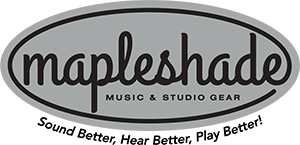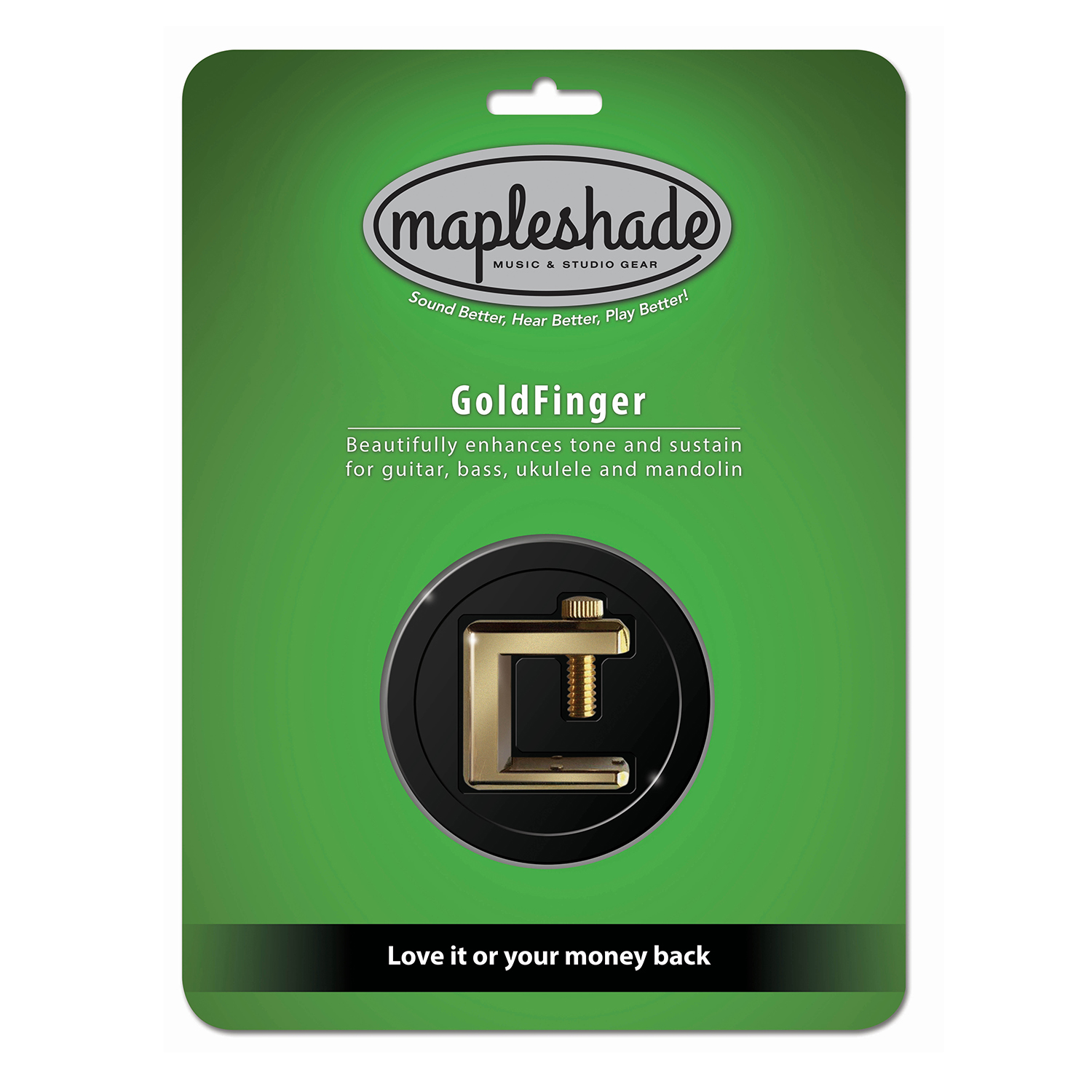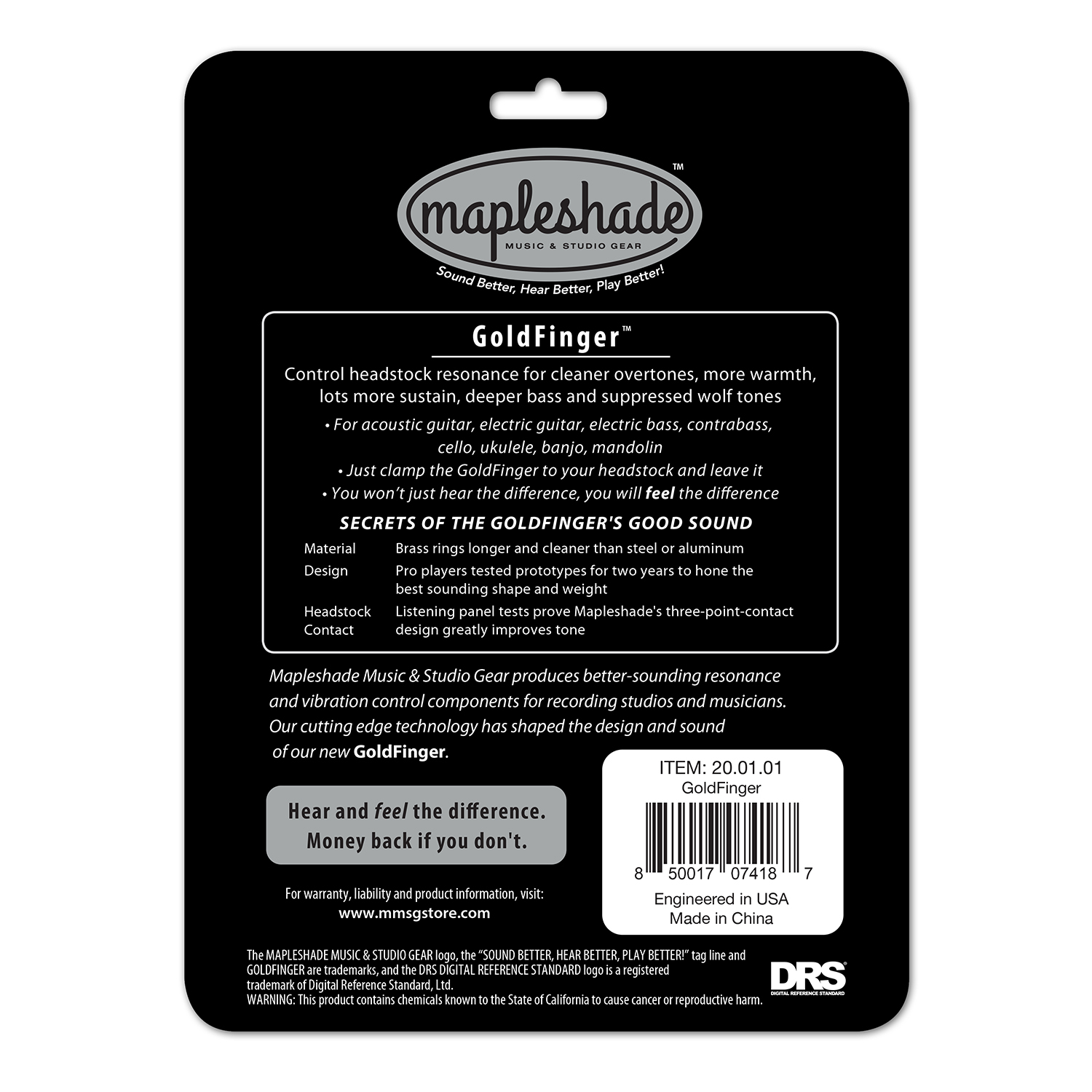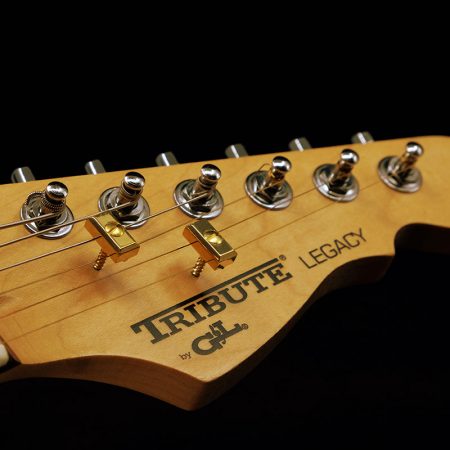WHY USE THE GOLDFINGER?
- Delivers seriously better tone and sustain; suppresses wolf tones.
- Fits acoustic guitar, electric guitar, electric bass, contrabass, cello, ukulele, banjo, mandolin.
- Simply clamp the GoldFinger to your headstock and leave it.
- You won’t just hear the difference, you will feel the difference.
SECRETS OF THE GOLDFINGER’S SOUND
Material: Brass rings longer and louder than steel or aluminum.
Design: Pro players tested prototypes for two years to hone the best sounding shape and weight.
Headstock Contact: Listening panel tests prove Mapleshade’s three-point-contact design greatly improves tone.





 Download the user guide
Download the user guide

Reviews
There are no reviews yet.